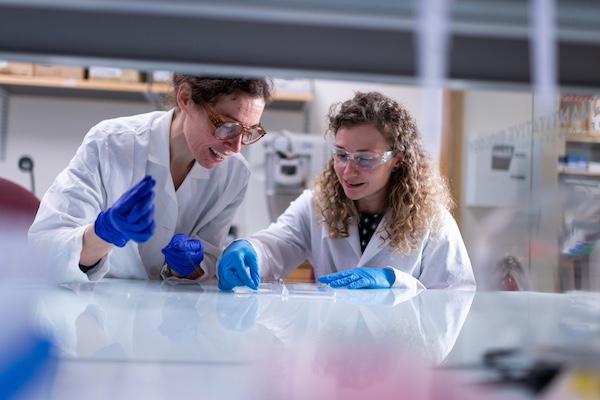Wisconsin biotechnology advocacy organization BioForward honored two giants in state biomedical innovation — stem cell research pioneer James Thomson and entrepreneur Ralph Kauten — for their scientific and business achievement during its annual summit September 27 in Madison.
Category: Regenerative Biology
Curious research: Endowed chair honors developmental biologist Phil Newmark
Newmark, who joined the Regenerative Biology research focus at the Morgridge Institute and the Department of Zoology this summer, is also serving as the first recipient of the Burnell R. Roberts Chair in Regenerative Biology.
Early development reveals axolotl mysteries
In the amphibian world, the axolotl is the replacement-parts king. This endangered Mexican salamander serves as its own NAPA store for lost body parts, able to fully regenerate limbs, tail, heart, spine and eyes — making it a model of curiosity for regenerative biologists.
Madison College students think outside the shell in stem cell project
Since chick embryos lack a developed immune system, scientists are able to engraft other types of cells — including mouse and human cells — into the friendly 3D confines of the embryo and study their behavior. Under the right conditions, the introduced cells can thrive.
Regeneration pioneer to join Morgridge Institute, UW–Madison faculty
Phil Newmark, a developmental biologist studying the mysteries of how the body regenerates damaged tissue, will join the Morgridge Institute for Research and the University of Wisconsin–Madison Department of Zoology
